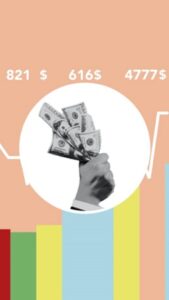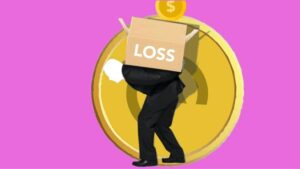SMCAs or Art Investing? A Deep Dive into Alternative Asset Investments

Introduction
There is a lot of choice in the alternatives market. That’s part of their appeal after all; variety can offer diversification, and diversification can offer protection from the corrosive impact of inflation as well as helping you to grow your wealth for the future.
In this blog we are going to look at the pros and cons of two specific asset classes, helping you to decide between Merchant Cash Advances (MCAs) and art investing. These investments both offer unique opportunities for diversification, but how do you choose where to invest? This blog post breaks it down for you.
Understanding MCAs
MCAs are a unique type of financing that provides a lump sum of cash to a business in exchange for a portion of future sales. Local businesses, like your main street dentist, hairdresser, or shoe shop, often turn to MCAs when they need quick funding and have a solid track record of credit card transactions.
MCAs are attractive to these businesses because they are much quicker to get hold of than traditional bank loans. This is especially true at the moment when uncertainty is high and banks are nervous about lending money. In environments like our current economic landscape, banks tighten their lending criteria, making thousands of businesses that would have been eligible for a loan before, suddenly locked out of accessing vital working capital.
The current moment of economic uncertainty is only compounding what has already been an ongoing trend of regulatory changes and tightening risk profiles since 2008, making it harder than ever for businesses to gain access to the funds they need to survive.
According to Delaware Business Now, on average, 70% of businesses with under 5 million in revenue are being rejected on their loan applications. This is bad news not only for the business and the families they sustain but for the economy more broadly. We need smaller companies to be functional and flourishing to keep the whole financial ecosystem resilient and healthy.
The Benefits of MCAs
This is where MCAs step in to provide a vital lifeline and help to keep these businesses operational. Investors, like yourself, essentially purchase some of a business’s future income. Companies that have a strong track record of robust and consistent sales are accepted to receive the cash advance, and then begin paying you back immediately, from day one.
If you are interested in a super deep dive into exactly how MCAs work from start to finish, you can get that here.
As an investor, MCAs offer a potentially high return on investment, depending on the business’s performance.
Data from FinImpact shows that MCAs tend to return between 20% and 80% to their investors. These figures speak for themselves and make it pretty clear why Digital Journal has forecasted that the MCA industry is set to grow 19.33% CAGR to $17.91 billion by 2027 from $620.31 million in 2021.

The data suggests that the industry is set to offer some serious opportunities for wealth-building over the next few years. This trend comes as part of a broader pattern of financial advisors and institutional investors relying more heavily on alternative assets than ever before because of the diversification, inflation protection, and risk mitigation that they can offer.
Understanding Art Investing as an Asset
Art Investing has a long and rich history, pun intended. The idea of purchasing a classic Renaissance oil portrait conjures images of opulent oak-paneled drawing rooms and men in starched collars smoking pipes. Unfortunately, the reality is usually somewhat different.
Unless you have several million dollars in cash, you probably aren’t going to be buying an iconic standalone piece like this one.
And, if you do have several million dollars in cash and you can buy an iconic standalone piece, then you are very unlikely to hang that extremely valuable piece of art up in your house where you can actually admire its beauty because the likelihood of it getting touched or damaged or stolen is just too high.
A huge number of people who participate in art investing never even see the piece they buy, which really kind of defeats the point. Very often, an art piece is purchased on paper and is kept in storage until the time of the next sale.
These works are treated more like shares or bonds or any other type of hands-off, impersonal paper-based investment. There is nothing wrong with this strategy per se, it’s just not very fun. Not to mention that the auction or dealer fees associated with buying art, as well as the prices for storing them afterward, can be incredibly high.
Fees, Fees, and More Fees
Whilst it’s common knowledge that investing in art requires deep pockets, what is often overlooked is just how much it costs to maintain, store, appraise, insure, conserve or restore, and move a collection.
There’s a lot of variety of course, especially where insuring more valuable pieces is concerned, but Artsy cites figures from between 1% and 2% to as high as 15% to 20% of the value of the collection. That’s really something to think about.
Tangibility and Illiquidity
Art pieces are tangible assets that can appreciate over time-based on various factors like the artist’s reputation, the artwork’s historical significance, market demand, and so on.
Some investors with a lot of cash are keen on art because it is a hard asset, like real estate, that can potentially provide some protection from inflation. An approach like this is understandably appealing as we endure the highest inflation rates in 40 years.
Art investment, however, is notoriously illiquid, meaning it can be hard to turn into cash quickly. The factors impacting art’s ROI can be difficult to understand and hard to pin down; can you say with certainty what makes a piece of art valuable? It’s a tough one and is considered a high-risk investment because of that.
But, if you have a high-risk tolerance, you don’t mind the murky factors surrounding the valuation of your investments, and you have the cash on hand to either buy a piece or buy a piece of a piece (fractionalization), and you don’t mind the high fees, then investing in the art could be a strategy for you.

The Trouble With Art Indices
Prominent auction houses like Sotheby’s and Christie’s typically lean on resources like the Art 100 Index by Art Market Research. This index traces the sales trajectory of artworks by 100 different artists across a variety of geographical locations, art styles, and periods. It curates data from 22 global auction houses and serves as a pulse check on the overall health of the worldwide art market.
In 2018, we saw the introduction of the Artprice100 Index by Artprice, zeroing in on the cream of the crop – the blue-chip artists (the really famous ones). Between 2000 and 2017, this index reported an impressive average annual growth rate of 8.9%, outpacing the S&P 500, which grew at less than half that rate during the same time span.
However, in the years 2015 through 2020, the tables turned with the S&P 500 outshining the Artprice100. The following year, 2021, saw a comeback for the Artprice100, and initial indications hint at a similar trend for the first half of 2022, although official data are yet to confirm.
All is Not As it Seems
Despite these seemingly promising figures, art indices are not exactly what they appear to be at first glance.
For starters, these indices exclusively consider the auction sale prices of artworks, conveniently overlooking the associated costs of art investments. Expenses like sales tax, shipping, appraisal, and others are not factored in.
As a result, even if a piece fetches an impressive sale price, it might not translate into profits if the cumulative upfront costs are higher than the final selling price.
Another pitfall is “selection bias.” Unlike stocks and bonds in the financial markets that have moment-by-moment price updates, art market prices are not as dynamic. They rely solely on auction data. Consequently, if an artwork never makes it to an auction, it is not included in any index. It remains invisible.
Artworks that remain unsold are often valued below their most recent selling price, which is why investors hold on to them, hoping for their value to increase, which may or may not ever happen.
Holding artwork that is currently valued at less than its most recent sale price falsely inflates the recorded returns of indices above the actual performance of the art market. Because of this, art indices contain an inherent bias: they only reflect successful sales.
When You Should Invest in Art
The Motley Fool recommends that you should only invest in art when all the below 5 criteria apply to you:
- You have personal expertise, or at least a strong and enduring passion for art, and are willing to dedicate a lot of time to research.
- You already have a strong and diversified portfolio of other assets and are not planning on relying solely on art for your investment strategy.
- You have a high-risk tolerance.
- You are prepared to tolerate the illiquidity of art and accept that once you have bought it, you might never be able to sell it. You must be prepared to hold the art indefinitely.
- You have enough ready cash to afford the storage, maintenance, fees, security, and insurance of the art that you purchase.
Comparing Liquidity: MCAs vs Art
Liquidity is a critical factor in investment. It’s the ability to quickly convert an asset into cash without affecting its price. MCAs typically have higher liquidity than art investments since repayment starts as soon as the business makes sales.

What this also means is that you can begin reinvesting your returns into other MCA deals, right from day one. These new MCA deals will also start returning money to your account immediately. And guess what you can do with those extra returns?
You can think about this as a form of super-compound interest which we call compound velocity. It’s a way that you can potentially grow your capital very quickly.
On the other hand, selling an art piece can take a significant amount of time and often relies on finding the right buyer.
Short-term Investment Potential: MCAs vs Art
When we talk about ‘short-term,’ MCAs have the edge. Repayments on an MCA begin almost immediately and are based on daily sales, providing regular returns. Conversely, art usually appreciates over a longer period, and profit is realized upon sale.
For example, we offer a 12-month short-term note at a target rate of 10%, and we offer a 24-month mid-term note at a target rate of 12%.
We also offer a totally unique self-directed model for those of you who prefer a more hands-on approach. Get in touch with us to ask for a free walk-through of the platform.
Income Generation: MCAs vs Art
MCAs generate almost immediate recurring income as they provide regular returns based on business sales. This regular cash flow can be a really attractive aspect for many investors, as well as a potentially lucrative one – see the section above on the supercharging power of compound velocity that MCAs offer.
With art, consistent income is not a guarantee. Profits are typically only realized when the art is sold, which may not happen for years, if at all.
Risk Assessment: MCAs vs Art
All investments come with risks. For MCAs, risks tend to lie in the business’s performance, while for art, the risks involve market demand, fluctuations, and sometimes, the art’s authenticity.
The Knoedler Gallery fraud court case is one of the better-known examples of how even highly respected and well-established dealers can be involved in selling art fakes for millions of dollars.
ArtNews describes the art market as “notoriously opaque”, and points to the saying that “it is the largest unregulated industry in the world, besides guns and drugs.”

MCAs are also considered a higher-risk asset, mainly because the businesses you purchase future sales from might fail. Unlike the art world, however, there are several layers of factual and evidence-based checks and balances, legal due diligence, and strict criteria for eligibility including detailed oversights on the businesses cash flow, profits, credit history, and more which companies have to pass in order to be considered eligible for an MCA.
In addition to these multiple layers of risk mitigation, MCA investors are also protected by partners such as recovery agents, whose specific purpose is to seek the full repayment of cash advances even if the business fails.
Conclusion: MCAs or Art Investing?
When it comes to choosing whether to invest in MCA or art, consider your financial goals. If you seek a more liquid, short-term, income-generating investment with manageable risks and more layers of due diligence and protection, MCAs might be the superior choice for you.
Remember to make your investment decisions carefully, and seek advice from financial professionals when in doubt.
You can get started with MCA investing right here, today.
